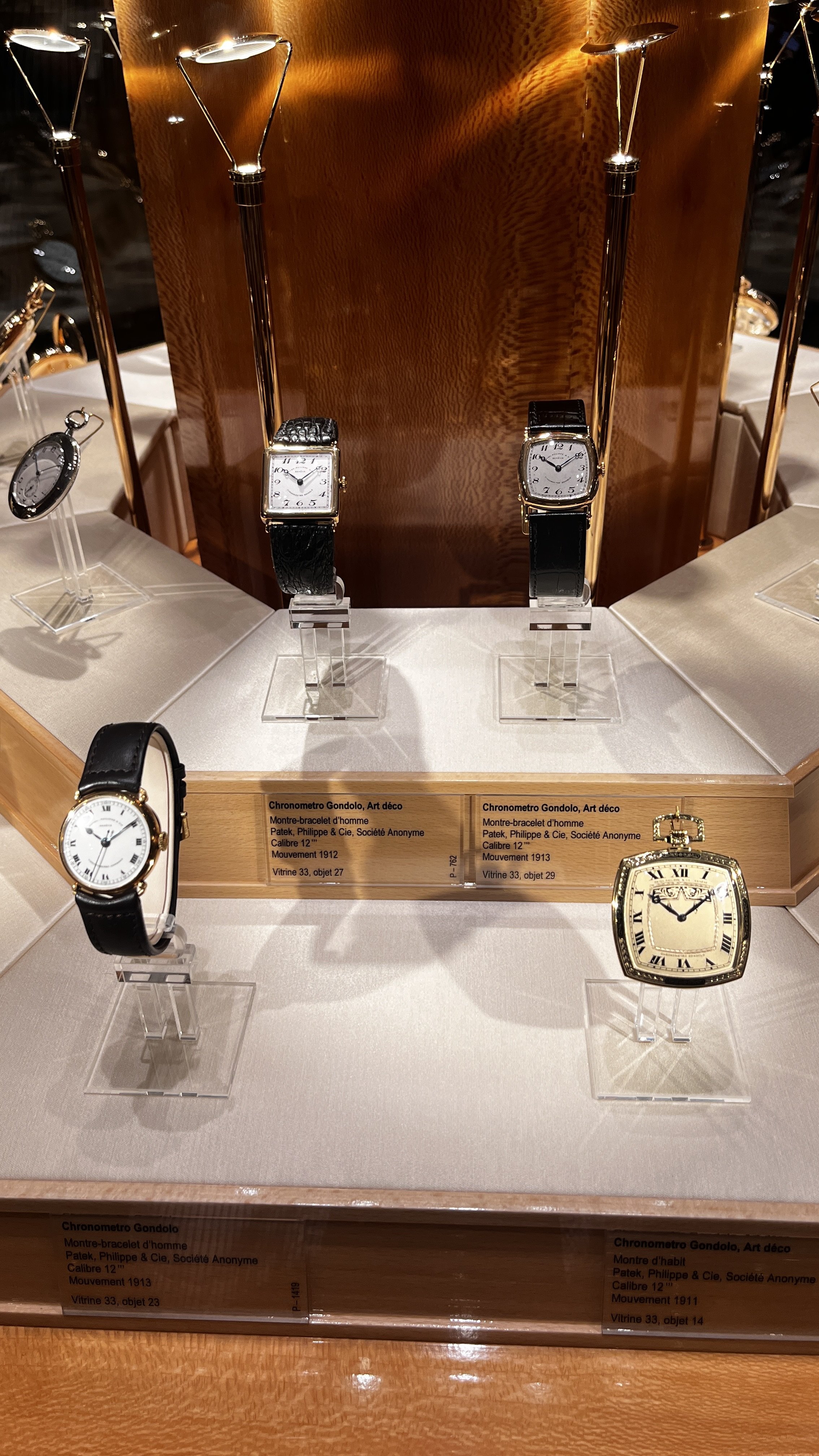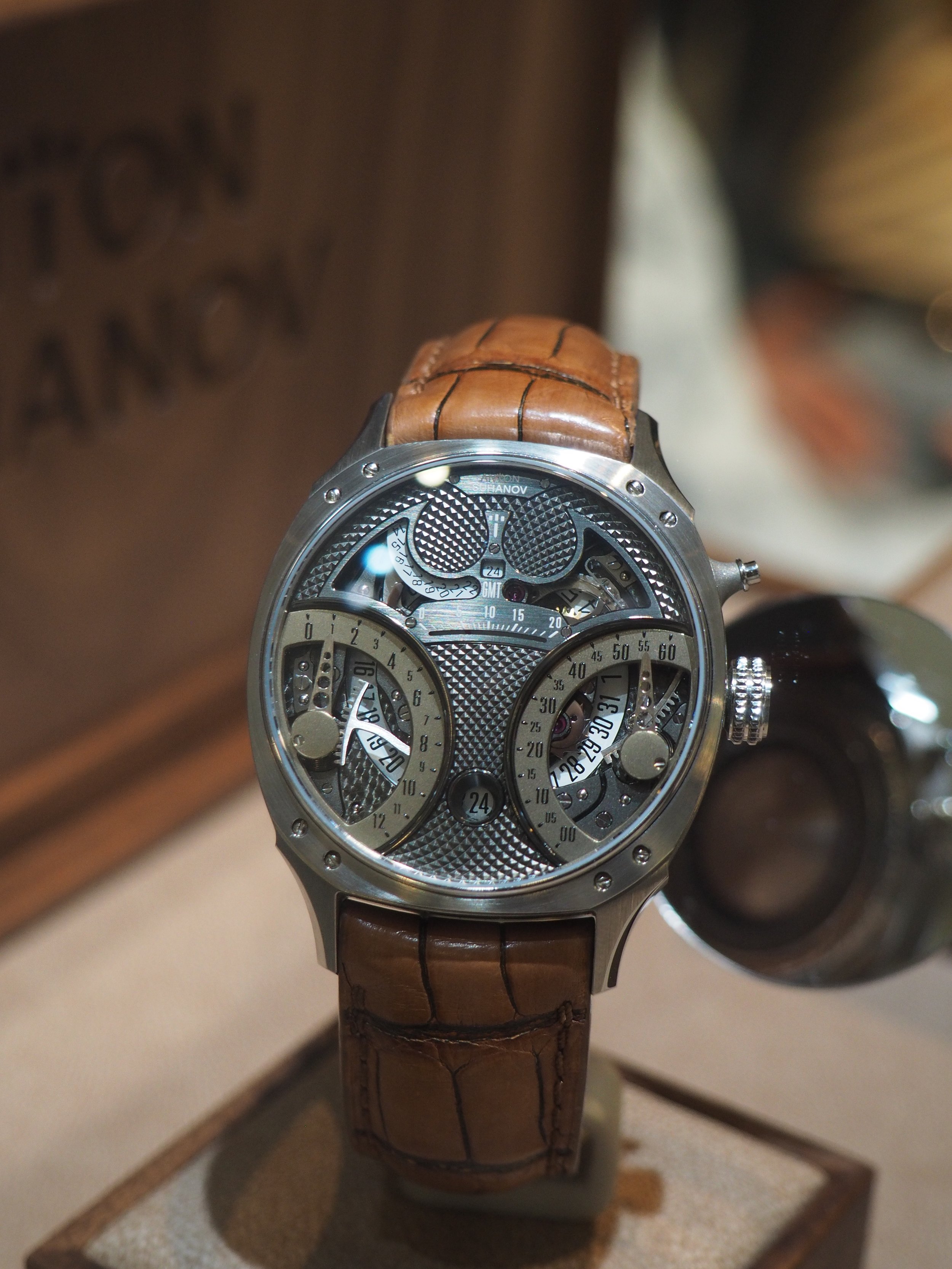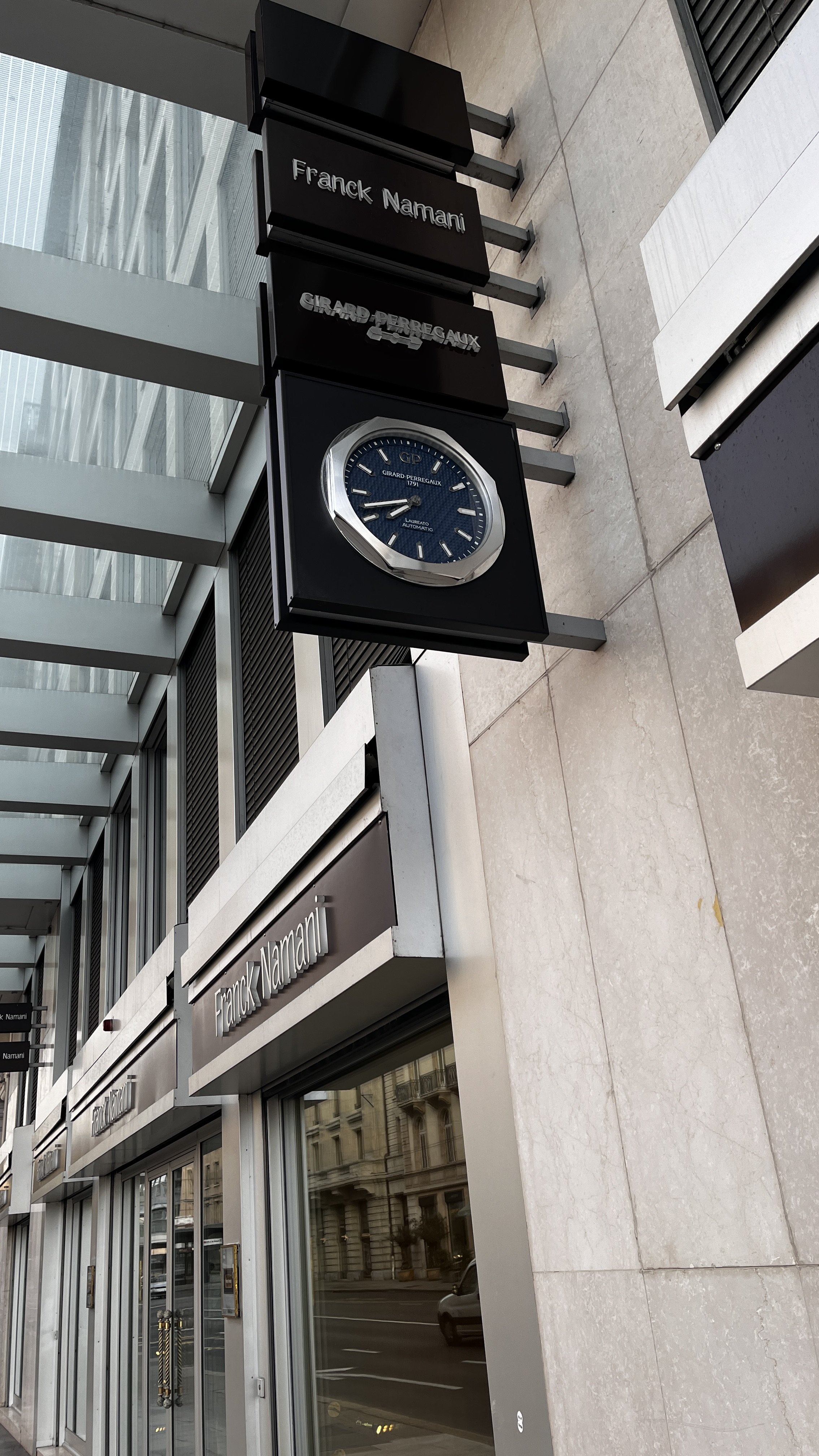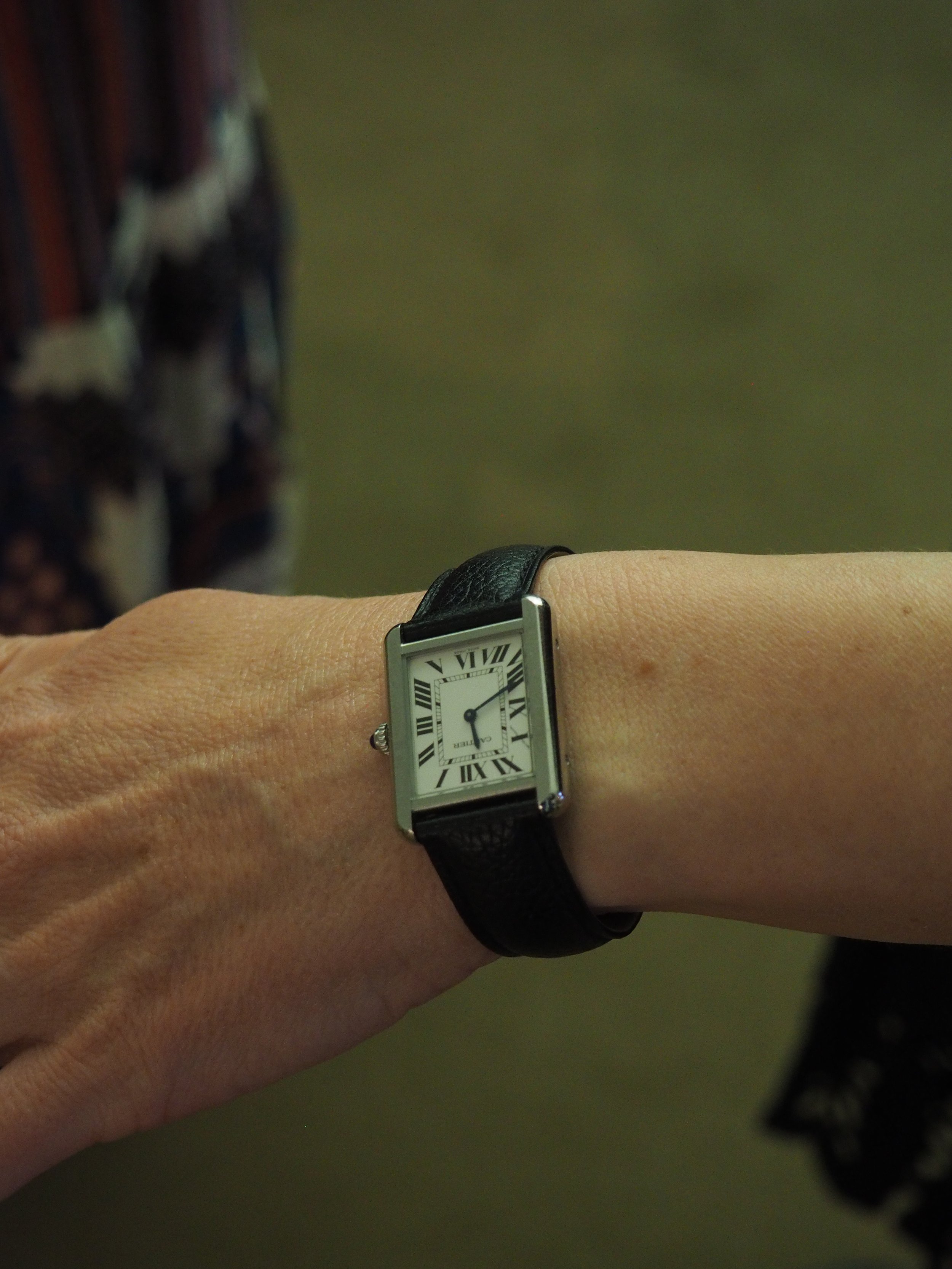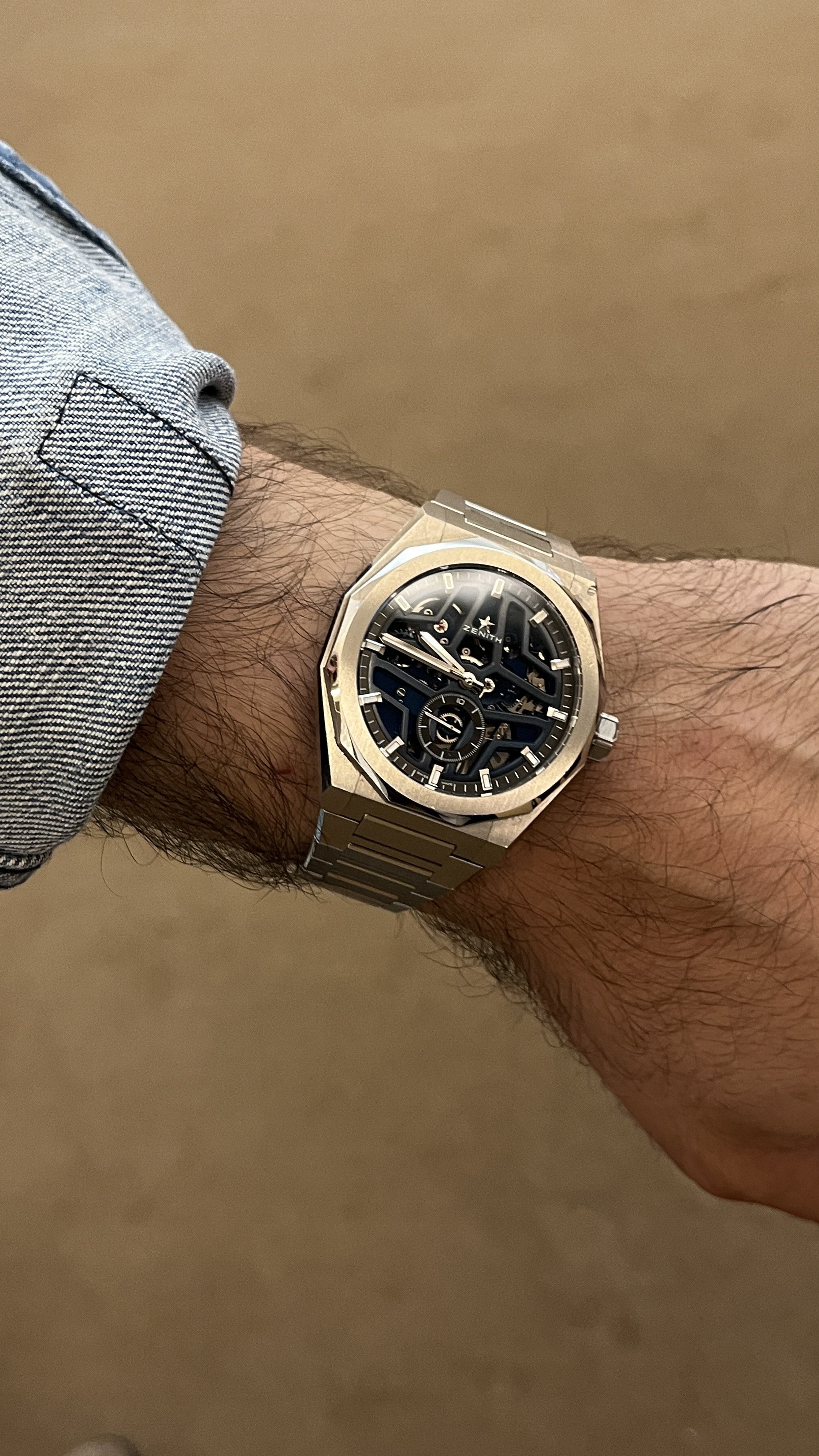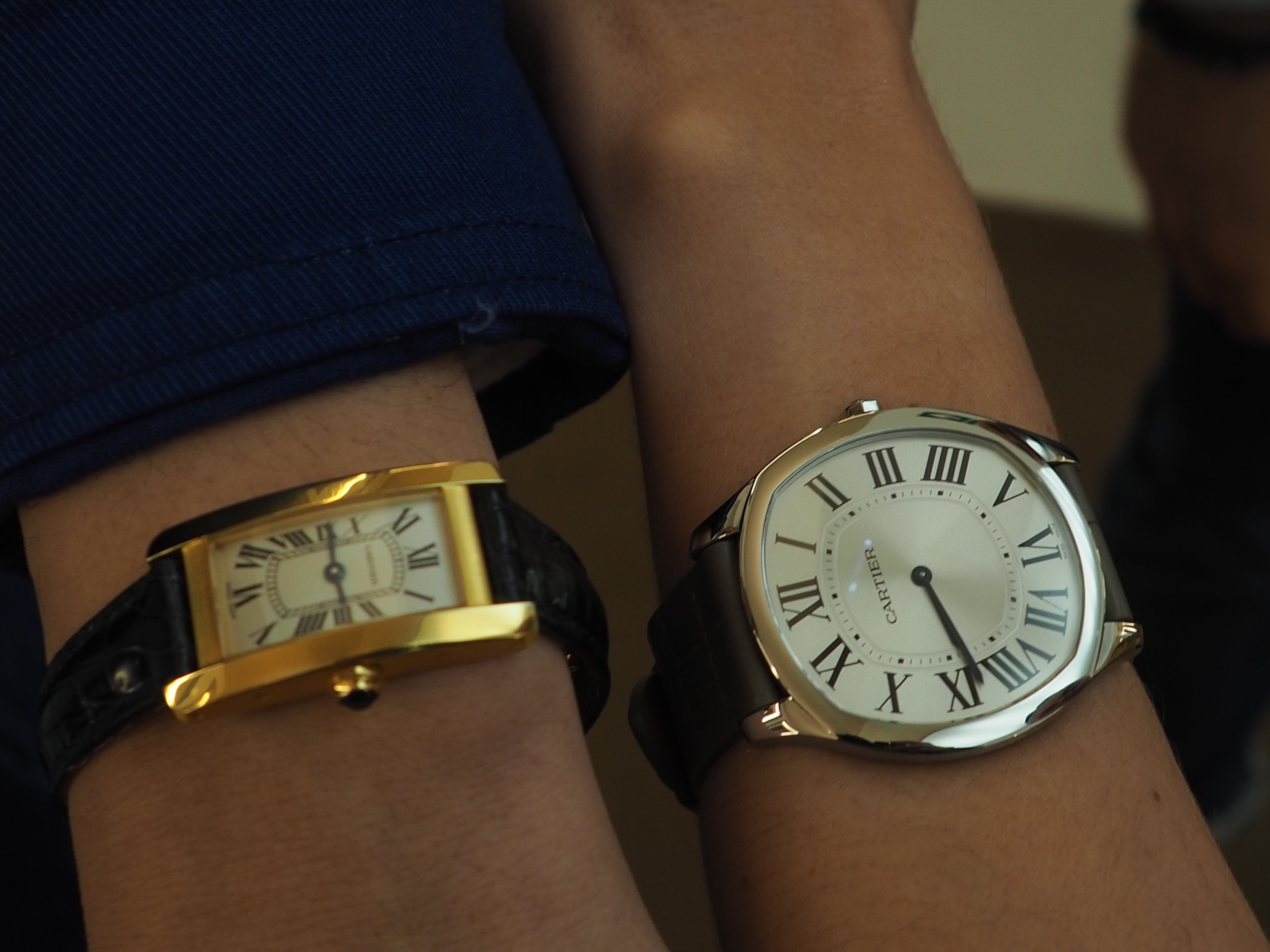Highlights: Geneva Watch Week
Hi folks, this one’s a bit different from the usual posting. Now that I’m back in Canada, I’m going to do a highlight of the cool things I saw and did over the past week during Geneva Watch Week. I won’t be covering much of Watches and Wonders here. Just a heads up.
Pardon the photos, most of them were taken with my phone. Anyway, here it is.
Visit to the Patek Museum
Some favourites from le musée Patek Philippe.
Gondolos from the Art Deco era (1910-1913):
The renowned Chronometro Gondolo line of pocket watches was founded in 1902 when Brazil’s Gondolo & Labouriau commissioned a Patek Philippe pocket watch with unique technological specifications, in this case a gold gear train. In 1910, Chronometro Gondolo released its first wristwatches. These watches' square, rectangular, and tonneau-shaped cases embodies the era. Additionally, the wristwatches were ordered with larger cases—up to 48mm in diameter—to satisfy the preferences of Brazilian watch enthusiasts.
Régulateur à Tourbillon ref. 3699 (1949):
Patek started the production of tourbillon movements for wristwatches in the 1940s, with many of them housed in watches created specifically for the Geneva Observatory timing trials during that period. The specific movement for the 3699, numbered 861.115, was made by André Bornand, a master watchmaker for Patek at that time, and professor at the Geneva School of Watchmaking, who stood as one of the finest tourbillon specialists of the 20th century. It was not cased until 1983 and is currently housed in the Museum of Patek Philippe. Philippe Stern at some point in the early 1980s requested it was put in a casing and given the reference ref. 3699 so he could wear it in 1987.
QP with ebauche from Victorin Piguet & Co (1941):
During the early 1930s, wristwatch sales were outnumbering pocket watches by two to one, so it was time for the company to focus on a wristwatch and a new movement for the modern era. The caliber 12”’ 120 was this manual movement with an off-set seconds hand. In order to modify the movement to include a center seconds mechanism, Patek called upon its trusted partner. Victorin Piguet & Co. who ingeniously designed a notably elaborate set-up that included a pivoted lever to support an intermediate wheel.
QP with rose gold dial ref. 2497 (1952):
It was made for 12 years during which time 179 examples were made. Patek’s own records state that this particular watch is from 1952 and features a rose gold case (36.6mm diameter, No. 674 392), with satin-finished rose gold dial from 1964, rose gold feuille hands, blued steel center seconds and applied gold baton indexes.
Ref. 5040 (1992):
This watch stands out due to its tonneau tortue case and Breguet-style hands in gold, a design that was popular in the 1920s and 1930s but much less so in the present era. The Reference 5040 was produced from 1992 to 2007. There were 1,800 pieces made in yellow gold, of which about 80 are well-known on the market.
Duke Ellington's ref 1563. (1946):
This watch can often be confused with ref 1463. Though the two watches share many features including the same 13-ligne base caliber, the same round pushers used to activate the chronograph, and a water-resistant, screw-in case back. However, the 1563 is a rattrapante, which is twice the chronograph. There are only three ref. 1563 chronographs that are known to exist, and both of them, except for Duke Ellington's, are owned by private collectors (one of them being Jean-Claude Biver); Christie's last auctioned one in 2013 for $1,572,789. Ellington originally purchased the watch in Geneva on July 28th, 1948.
AHCI Masters of Horology Third Edition
The event was held at L'iceBergues from April 9th to 14th. Had the pleasure to talk with industry professionals and some of the watchmakers here.
Miki Eleta showing me his personal Timeburner.
All that's visible on the dial is essentially an aluminum piston that protrudes from the case at nine o'clock, together with a rhodium-plated rod and crankshaft on bead-blasted brass. This piston has a black line that, when the rod and crankshaft rotate clockwise, slowly moves the piston forward and backward, indicating the minutes on the non-linear scale. Meanwhile, as the day goes on, the hour is displayed in a sizable, digital format in the window across the bottom of the dial, revolving clockwise.
Ludovic Ballouard Upside Down.
Kari Voultilainen 20th Anniversary Tourbillon.
Anton Suhanov Racer Retro.
Winner of the LVMH Watch Prize, Raúl Pagès Régulateur à détente RP1.
Hajime Asaoka TSUNAMI “As Time Goes By”.
Asaoka-san gladly posed for the photo.
Clocks of Geneva
Breguet Tourbillon Clock, Rue du Rhône boutique.
F.P. Journe Wall Clocks in the shape of the iconic 'Chronomètre Souverain', Hotel Longmalle boutique.
Girard-Perregaux Laureato Clock, Quai des Bergues.
Longines Clock, Passage Malbuisson.
On the hour, 16 chiming clocks signal the time for the little door at one end to swing open and reveal a parade of 42 figurines and 13 horses which move majestically across to the other side under the clock.
Franck Muller Clock, Rue de la Tour-de-l'Ile.
Watches, Clocks Galore at Plainpalais Flea Market
Never seen this much variety at a flea market before. I didn’t get anything, sadly.
Watch Spotting
56175SA Two-tone 33mm AP Royal Oak.
Cartier Tank Solo, bracelet & leather strap.
Zenith Defy Skyline Skeleton.
Sophie with her Drive de Cartier, me with my Tank Américaine.
14270 Explorer.
Okay, I lied. These are some of my favourite releases from Watches and Wonders.
Zenith Defy Revival A3468.
Cartier Privé Tortue Monopoussoir Chronograph.
A. Lange & Söhne Datograph Perpetual Tourbillon Honeygold ‘Lumen’.
Lastly:
I was lucky enough to get a spot at Le Restaurant F.P. Journe. One thing I noticed though, all the restaurant staff, including head chef Dominique Gauthier were wearing a red Elegante that I’ve never seen before. They wouldn’t let me take a picture of it, however. Overall a positive experience.
Ciao!



